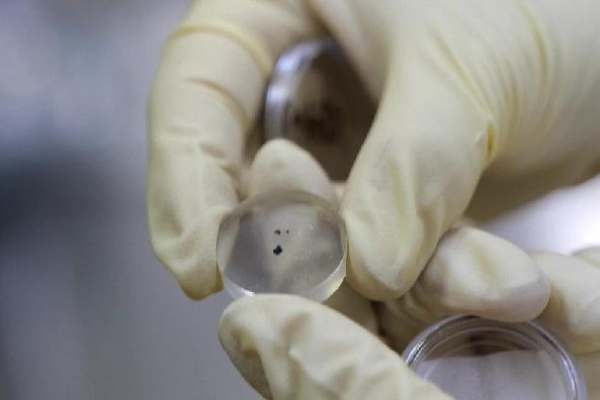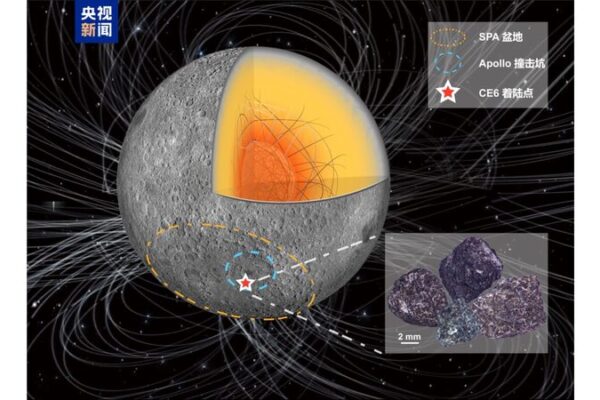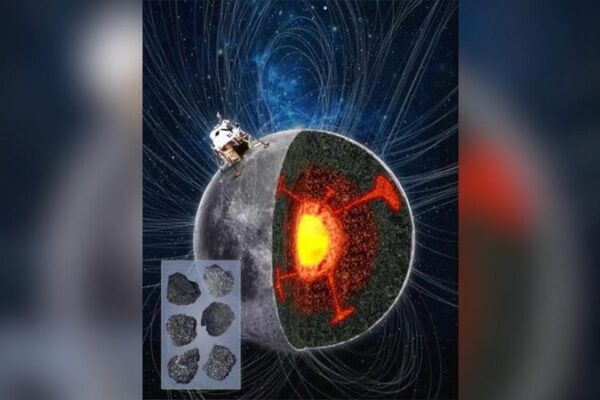The 2025 Zhongguancun Forum (ZGC Forum) kicked off in Beijing on Thursday, showcasing China’s top 10 scientific breakthroughs for 2024. The National Natural Science Foundation of China (NSFC) announced these advances at the opening ceremony, highlighting the nation’s strides in science and technology.
1. Chang’e-6 Lunar Samples Reveal Ancient Volcanism
The Chang’e-6 mission returned samples from the moon’s far side, unveiling evidence of volcanic activity dating back 2.8 billion years. Researchers discovered unique basalt compositions and signs of volcanic events as old as 4.2 billion years, offering new insights into the moon’s geological history.
2. Taichi Photonic Chiplet Boosts AI Efficiency
Chinese scientists developed the “Taichi” photonic chiplet, achieving an energy efficiency of 160 Tera Operations per Joule. This groundbreaking chiplet introduces an architecture that enables efficient in-situ photonic training, significantly enhancing artificial general intelligence capabilities while reducing energy consumption.
3. Unveiling Neurotransmitter Transport Mechanisms
Researchers explored key neurotransmitter transporters, shedding light on how psychiatric drugs interact with them. The study reveals new binding sites that could lead to the development of safer neuropsychiatric medications with fewer side effects.
4. Atomic-Scale Nanolasers Achieve Record Miniaturization
Scientists developed nanolasers with atomic-scale features using a novel dispersion equation. These nanolasers demonstrated coherent lasing patterns, including Chinese characters, promising advancements in imaging tools for material and life sciences with low energy consumption and high-speed modulation.
5. Breakthrough in Ultra-Low Temperature Refrigeration
A spin supersolid state was discovered in a cobalt-based material, exhibiting both solid and superfluid properties. This quantum state achieves a giant magnetocaloric effect, enabling refrigeration at ultra-low temperatures without the need for helium-3, paving the way for advanced cryogenic technologies.
6. Universal CAR-T Therapy for Autoimmune Diseases
Medical researchers successfully treated severe autoimmune diseases using allogeneic CAR-T cells from healthy donors. This marks a global first in achieving significant clinical efficacy with universal CAR-T therapy, improving treatment accessibility and reducing costs.
7. Impact of Extra X Chromosome on Male Fertility
A study revealed that males with an extra X chromosome experience developmental defects in germ cells starting from the fetal stage. The inability to inactivate the additional X chromosome disrupts gene regulation, leading to infertility issues.
8. Discovery of Graviton Modes in Quantum Materials
Researchers observed graviton-like particles in gallium arsenide quantum wells, revealing spin-2 low-energy excitations associated with the fractional quantum Hall effect. This finding advances quantum gravity research and has implications for topological quantum computing.
9. High-Efficiency Actinide-Based Micronuclear Battery
A novel actinide-based micronuclear battery was developed, featuring a coalescent energy transducer that increases energy conversion efficiency by 8,000 times. This innovation achieves record-high efficiency and offers new methods for recycling radioactive waste.
10. Supermassive Black Holes Influence Galaxy Evolution
Studies found that galaxies hosting more massive supermassive black holes contain less cold gas essential for star formation. This evidence confirms the role of supermassive black holes in transitioning galaxies from active to quiescent states, deepening the understanding of galactic evolution.
With the theme “New Quality Productive Forces and Global Technology Cooperation,” this year’s ZGC Forum runs until March 31, fostering international collaboration and showcasing China’s commitment to scientific advancement.
Reference(s):
China's 10 scientific advances of 2024 released at ZGC Forum
cgtn.com








